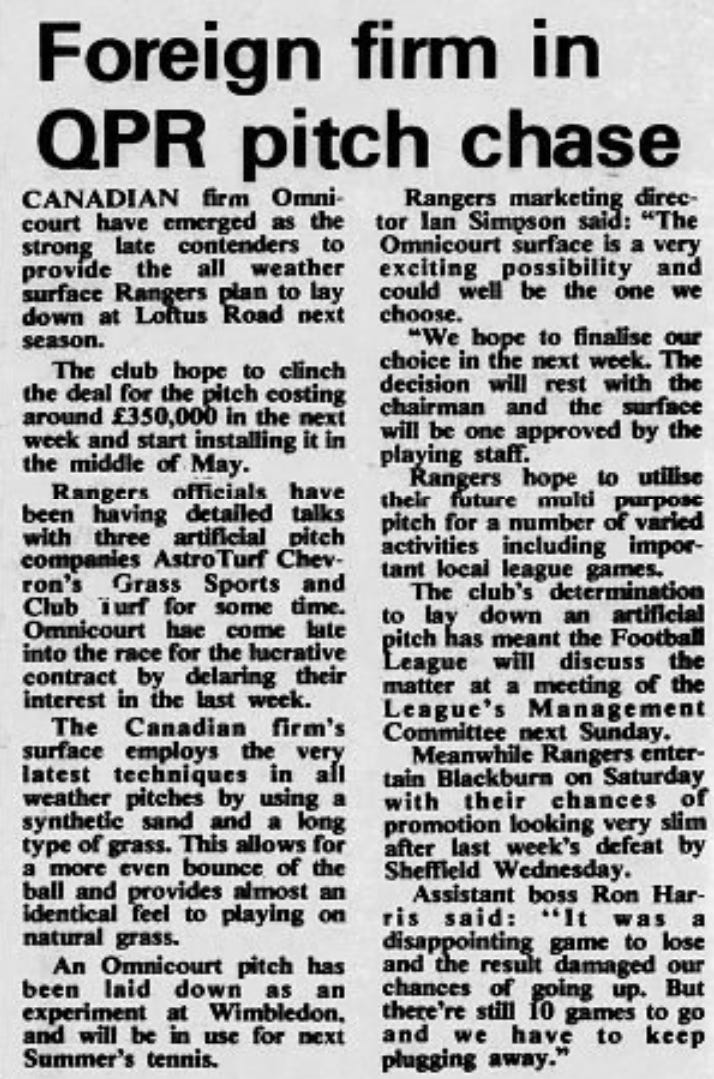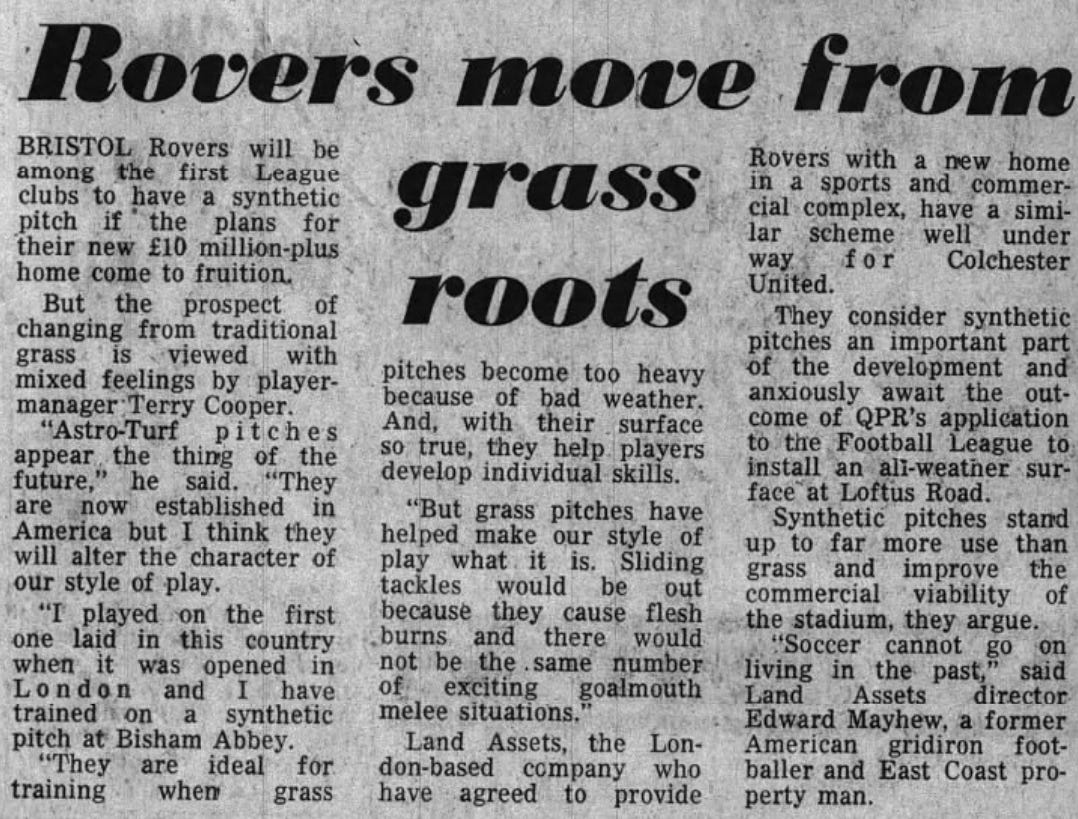Artificial Turf at Loftus Road
As I’ve spent time watching old NASL games, I’ve always been curious about the phenomenon of football on artificial turf.
I grew up watching sports on artificial turf, of course. Most of the baseball and American football I grew up watching on television in the late 1980s and early-to-mid 1990s was played on artificial turf. Since I was just a kid, I was largely sheltered from the debates that took place at the time over whether the hard stuff contributed to injuries or, worse yet, completely changed the nature of the sports.
In hindsight, I can see the issues. NASL matches, for example, were characterized in large part by a lack of sliding tackles. The artificial pitch played a lot more true and predictable than the bumps and mud common on English pitches at the time, sure. However, the game looked sterile and somewhat foreign, as if the players were on a different planet.
Anyway, as you may know, QPR decided in early 1981 to abandon its muddy pitch in favor of an artificial solution.
The earliest mention of this I could find comes from March 1981:
The idea of synthetic turf made in 1981 providing “an identical feel to playing on natural grass” is hilarious. I suppose that it was probably more forgiving than, say, the infamous concrete artificial turf at Giants Stadium. However, there is simply no way that the turf felt anything like real grass, no matter what the salesmen said.
And, as it turns out, permission did come from the Football League just a few weeks later.
Now, the idea that QPR was somehow ahead of the curve is hilarious in hindsight. In fact, less than 15 years following this announcement, the artificial turf of United States stadiums was forcibly replaced by all grass turfs for the World Cup.
In other words — not all of those new fangled ideas are likely to stick in the long run.





